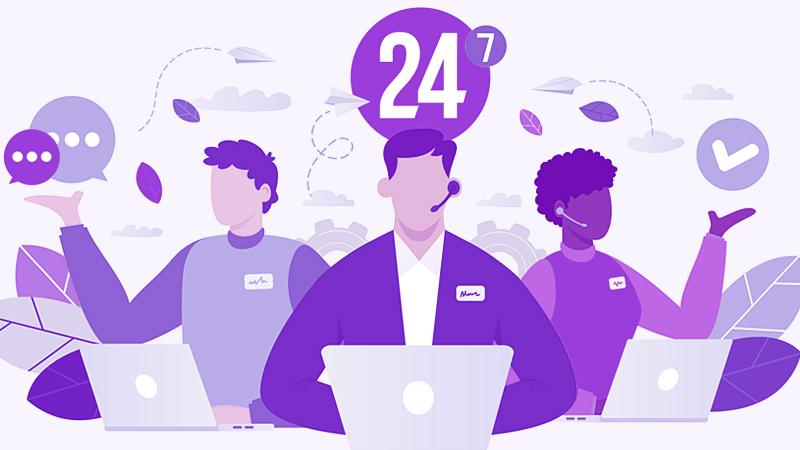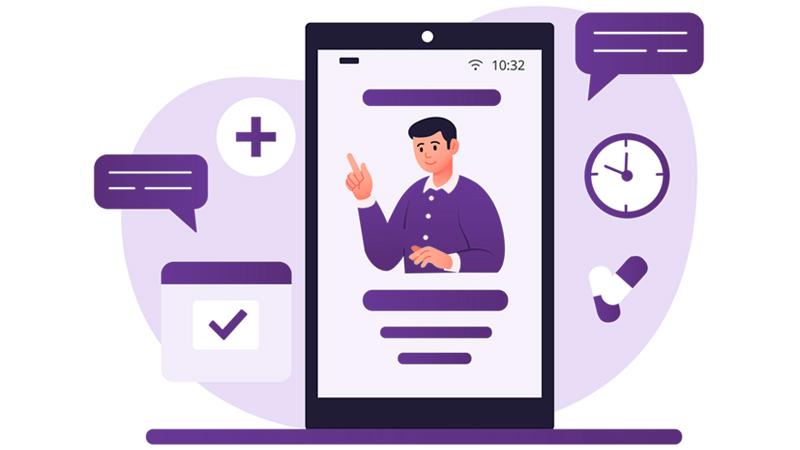Transforming CX delivery in a cost-conscious world

Jim Mitchell
Vice President of Customer Experience and Digital Innovation

This article was originally published on ExecsInTheKnow.com as part of our Outsourcing Briefing series.
Right now, economic pressures are pushing customer experience (CX) leaders and their outsourcing providers to get creative in finding solutions that heighten efficiency without lowering service quality. Once again we’re reminded that necessity is the mother of all invention.
In my role as vice president of customer experience and digital innovation at TELUS Digital, I’ve been having conversations with CX leaders that follow a similar pattern. They’re grappling with rising customer expectations for efficient service, increasing operational costs and shifting talent requirements for agents due to improvements in self-service solutions. Ultimately, these leaders are looking for value and are adamant that the choices they make are going to need to stand up to significant scrutiny.
It’s my estimation that, due to a combination of factors, the business process outsourcing (BPO) industry is on the precipice of a considerable evolution. In fact, if you just look at the projected growth of the BPO market, it’s expected to scale to $525.23 billion by 2030, growing at a CAGR of 9.8% from 2025 to 2030 according to Grand View Research. Beyond the scale, this is a time of great change and possibility. A host of agent-facing technologies are augmenting the abilities of contact center professionals, opening up new compelling outsourcing opportunities around the globe. Where once a brand might have only considered delivering support from onshore sites, they’re now looking offshore. Where once a brand might have limited their scope to a few countries, they’re beginning to recognize a world of opportunities.
The leaders I’ve been speaking with are interested in exploring new payment models. They’re looking to performance-based pricing models, which create shared accountability and strengthen partnerships between brands and their BPO providers. These new pricing models, coupled with new technology, are reshaping CX delivery in a cost-conscious world.

Execs In The Know: 2025 CX Leaders Trends & Insights
Access the latest survey results and stay on top of CX developments in 2025 with this new report by Execs In The Know, sponsored by TELUS Digital.
Why outsourcing models are being reimagined
While cost pressures are driving many conversations right now, what’s fascinating is the ways in which these forces are pushing the industry to evolve beyond simple cost-cutting. What I’m seeing instead is a push toward balanced value creation, where organizations are finding ways to optimize costs while building strategic partnerships that drive innovation and enhance customer lifetime value.
This evolution is particularly evident in how contact centers are being leveraged. As industry expert Adrian Swinscoe recently noted on an episode of the TELUS Digital podcast, Questions for now, “The contact center is this gold mine of real-time data, which many brands are not really leveraging to its full extent.” Forward-thinking organizations are now treating their contact centers as strategic assets, increasingly working with their CX partners to derive insights and ultimately improve products, enhance service delivery and drive customer loyalty.
This shift towards strategic partnerships is reshaping how brands approach outsourcing altogether. We’re witnessing a growing number of countries emerge as viable outsourcing locations, which is enabling brands to dilute risk across numerous regions and sites, offer support across time zones and leverage specialized expertise. By thoughtfully matching customer needs with these varied talent pools, brands can optimize their CX delivery. For example, this could mean routing complex technical issues to specialized teams, ensuring language-specific support is available or tapping into local cultural knowledge for more nuanced customer interactions. The result is a more flexible, resilient and capable global CX operation that can adapt to changing customer demands while managing costs effectively. TELUS Digital has more than 30 countries of operation, setting us up to match the right capabilities with each brand’s unique needs, whether that’s multilingual support, follow-the-sun coverage or specific domain knowledge.
The result is a more sophisticated approach to outsourcing that goes beyond simple labor arbitrage. It’s about leaning on a partner to find the right balance between cost efficiency and value creation, recognizing that the cheapest option isn’t always the most cost-effective in the long run.
Innovation knows no bounds, or borders
The proliferation of AI in the contact center is erasing traditional limitations and creating opportunities for exceptional service delivery from anywhere in the world. According to HubSpot, 78% of customer service professionals report that AI and automation allow them to concentrate on the most important aspects of their roles. Think of what that could do to reduce stress for agents and minimize attrition, which as all CX leaders know, is a significant cost in the industry. In a separate study from Microsoft about enterprise use of AI in general, it was found that for every $1 invested in AI, companies are seeing a $3.50 return — often in just 14 months.
At the heart of this transformation are AI-powered knowledge bases and systems that put the collective wisdom of an entire organization at every agent’s fingertips. I once had a really eye-opening experience at a logistics company’s in-house contact center. In the middle of a side-by-side, an agent pulled open a desk drawer and referred to a printed FAQ document. I knew that wasn’t permitted, and when I asked him about it after the call, he explained that their knowledge base was so vast that it was impossible to find what you were looking for. He said, “We just have learned to adapt so we can take care of the customer experience.”
We helped this client out by deploying speech analytics to identify the most frequent reasons for support calls, narrowed it down to about 50 knowledge base articles, which comprised about 90% of the call volume. Next, we summarized those articles, worked on a knowledge base chatbot fueled by AI, and almost immediately we saw a dramatic change. The solution reduced average handle time by 38 seconds while increasing CSAT by nine points, but most importantly, it boosted agent confidence and satisfaction — particularly among new hires — leading to lower attrition rates.
Beyond knowledge management, we’re seeing remarkable advances in other areas that are transforming global CX delivery. Real-time coaching and performance analytics provide instant feedback, helping teams continuously improve their skills. Collaborative platforms narrow the distance between contact center locations, enabling the delivery of consistent customer experiences. Through AI-driven routing and task allocation, savvy leaders are matching customer needs with the right expertise, improving first-contact resolution rates.
Similarly, speech enhancement technology increases call clarity for phone support. Background noise, poor connections and other technical barriers can create friction in support interactions. The technology works by processing audio inputs in real time, filtering out background noise, enhancing voice clarity and optimizing sound quality — much like how noise-canceling headphones improve listening experiences. With this technology, brands can ensure clear conversations between customers and agents, preserving the authentic voice and personality of agents while optimizing for mutual understanding.
Outcome-based pricing aligns incentives between partners
To navigate cost pressures, the leaders I'm speaking with are increasingly looking beyond traditional pricing models, and instead want to explore a dynamic where compensation is tied directly to results. This outcome-based approach creates natural alignment between brands and their outsourcing partners, as both parties are invested in achieving the same goals. It’s a model that gives brands confidence to expand their geographic horizons, knowing their partners are equally invested in delivering excellence through clearly defined, measurable outcomes. It bears repeating that this type of pricing strategy, in conjunction with speech enhancement and language translation technology for non-voice support, is having a marked influence on how leaders are looking at CX delivery right now. Those who would never even have considered looking to leverage support from beyond their shores are now moving on international opportunities.
The beauty of outcome-based pricing is its flexibility. For sales-focused programs, we might tie compensation to conversion rates or revenue generated. In customer care scenarios, we could look at metrics like customer satisfaction scores or first-call resolution rates. Some brands might prioritize efficiency metrics like reduced handle times, while others focus on customer loyalty indicators. On the other hand, forward thinking leaders and boundary pushing companies may go even further, tying compensation directly to specific outcomes achieved, such as total monthly paid/active subscribers or completed transactions, moving completely away from measured KPI reliant pricing models. The key is choosing outcomes that genuinely reflect the value being created and working with a partner who is able to deliver.
Clear agreements, with well-defined metrics and measurement methodologies, are essential. Both parties need a shared understanding of what success looks like and how it will be measured. This includes establishing baseline performance levels, defining measurement periods and agreeing on how external factors might impact outcomes.
When done right, this model transforms the brand-provider relationship from a transactional one to a true strategic partnership. It encourages innovation, as providers are incentivized to find new ways to improve performance. What’s more, it fosters a long-term perspective, as both parties focus on sustained success rather than short-term gains.
Adapt proactively to changes in the CX landscape
The customer experience outsourcing landscape is in a state of flux, driven by technological innovation and evolving partnership models. AI-powered tools are enabling contact center teams to deliver exceptional service from anywhere in the world, while outcome-based pricing models are creating stronger alignment between brands and their CX partners.
What excites me most about this evolution is how it’s changing the conversation. Where once the focus might have been solely on cost reduction, today we’re talking about value creation. We’re discussing how to leverage global expertise, enhance service quality and drive innovation — all while maintaining cost efficiency. The most successful brands will be those that embrace and adapt to these changes, working with partners who can help them navigate this new landscape.
If you’re ready to explore how these approaches could benefit your CX operations, connect with our team of experts.



